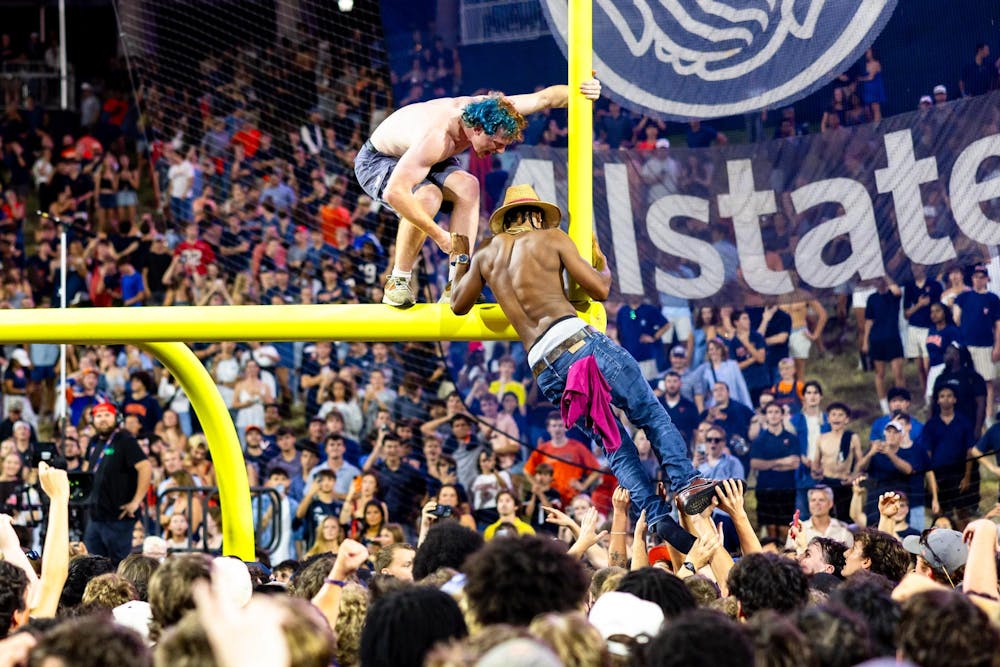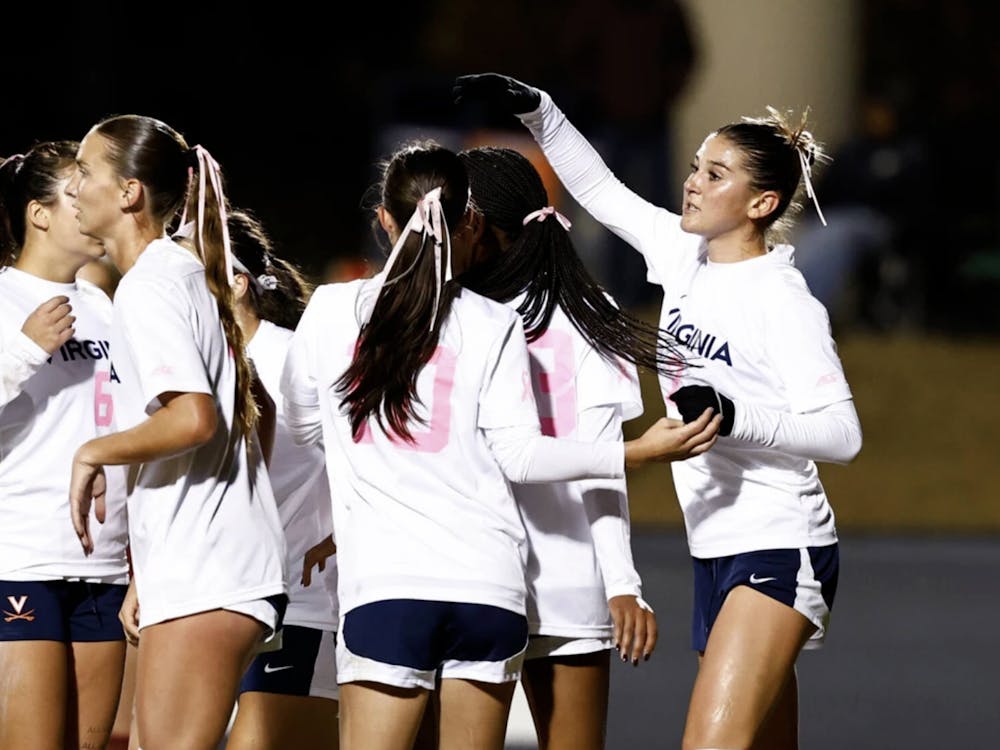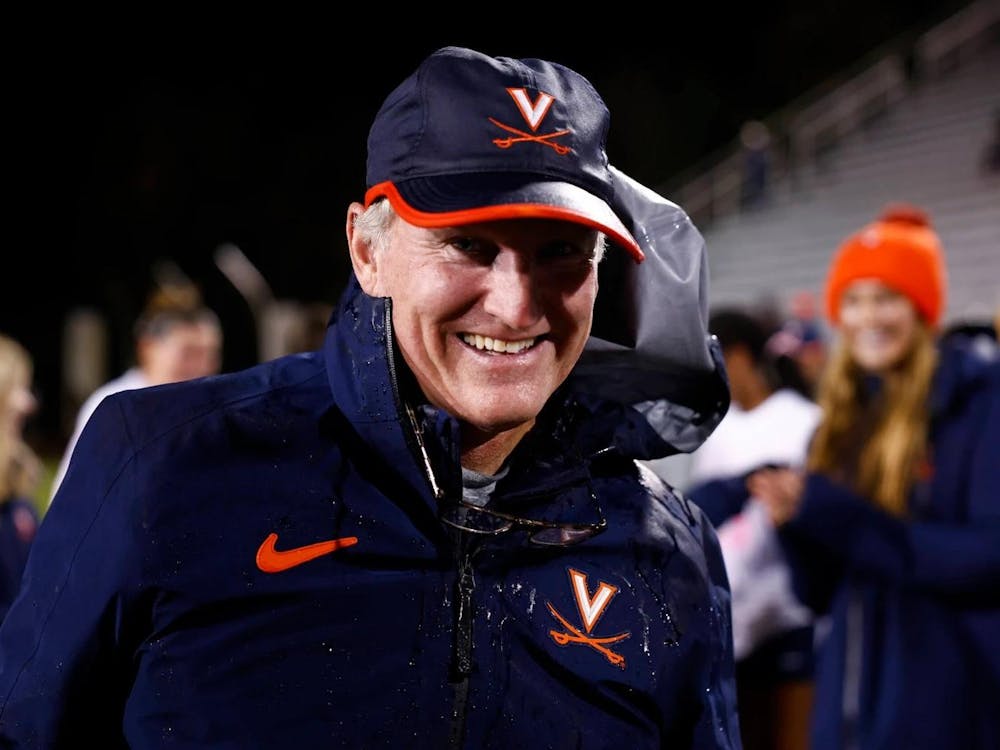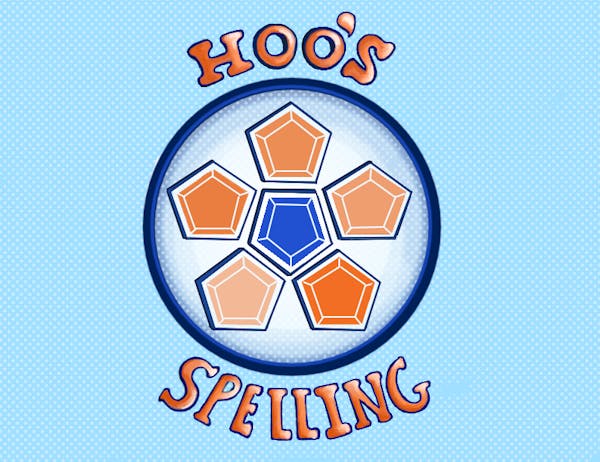The people poured onto the field like water from a knocked-over jug. In their glee, they swallowed the grass and all the players on it and mobbed at midfield after Virginia’s 46-38 win over No. 8 Florida State.
Then a couple of them, though their mission was doomed to fail, looked up.
“First thing I’m thinking is, ‘Oh my god, we did it,’” fourth-year College student Joey Burch said. “The second thing I’m thinking is, ‘Wow, this goalpost has to come down.’”
Nate Hines, home in Seattle, was not watching the game. The Class of 1996 alumnus has kids now, and a job, and better things to do than watch his alma mater get pummeled on national television. He was at his son’s robotics practice when his phone started pinging like a satellite with texts about the game.
Hines is on the front page of The Cavalier Daily, Nov. 3, 1995, standing on the goalpost’s crossbar, clutching an upright with one arm, pointing forward with the other in some comic impression of George Washington.
Hines managed to tune in for the end of the game Friday, just in time to watch the field storming and the efforts at removing the goalpost.
He watched on as Burch sprinted and screamed with the crowd before reversing course to the endzone. In the feverish air, there it was — 35 feet tall, 18 feet 6 inches wide, yellow all over. A crowd had closed tighter around the uprights, stragglers of the field storming as well as interested students. Burch watched a couple people slip from the crossbar, unable to get a grip.
He turned to the guy next to him.
“Yo, give me a boost up,” Burch said.
The guy made a stirrup with his interlocked fingers and helped Burch, shirtless and with half his red curls bleached and dyed blue for the occasion, onto the crossbar. He was the first one up.
“I really did think we were going to be able to get it down,” Burch said. “[But] no one else was really, like, trying to climb up it.”
That was the first problem, Hines observed from home. But the students’ attempt last week was flawed all around.
“You can’t really do it that way,” Hines said. “[The goalposts] are too strong.”
Read the manual, kids. Take it from the old-timer. Goalpost Takedown 101, from someone who became an almost regular goalpost climber back in the day, alighting on the uprights after more than one field storming.
There first need to be numbers, a lot of weight to coerce that hunk of aluminum and steel into bending enough to divorce its foundations. As Burch noticed, the numbers were not materializing.
Yes, some reinforcements came. A second-year Engineering student, who asked to remain anonymous, identified the biggest guy around him and clambered onto the goalpost, too. There just weren’t enough.
“I kind of knew that if it was just us two, it wasn’t going to come down,” the student said.
He had a strategy.
“I tried to jump on it, right?” he said.
Wrong, says Hines. In 1995, he and everyone else knew how to topple a goalpost. The first one went down almost immediately. Only one of its uprights is visible in the front-page picture, listing above the crowd, like the elevated bow of a sinking ship.
Hines ended up boarding the opposite goalpost, climbing to the top. ESPN cameras stayed on him for 15 minutes. He walked into class the next day, a Friday, to wide recognition.
Getting on, though, was just the beginning.
“Eventually I ended up sitting down on the crossbar, so my legs are hanging down on either side,” Hines said. “And then people would grab my legs and pull down.”
Uncomfortable, maybe. But there is some sacrifice to be made in order to get them down. More people can pull. People can throw jackets over, pull down on them.
“You're trying to just create area for people to pull, and then once you get it coming down a little bit, the further you can get it to come down, the more people can reach it,” Hines said. “And then it's just this sea of humanity that is able to pull quite hard.”
Burch and the other climbers, a rotating cast of a handful, though never more than two aloft at a time, tried anyway. Burch, at one point, stood on the same side as another climber. If he could just cross to the other side, he thought, maybe they would have the weight to pull it down.
He crossed to the middle, then slipped and fell, ending up unscathed but on the ground. The dream, at least for Burch, died right there.
“I really do think, if I had made it to that far upright, that we might have been able to get it down,” Burch said.
The rumor floated around, in the hours and days that followed, that the operation never had any chance, that the goalposts, after 1995, were reinforced. But that idea, according to Scott Fitzgerald, a program spokesperson, was baseless, rooted in something other than the jubilant ground at Scott Stadium.
“While they are obviously different goalposts between 1995 and today, there is not much that can be done in terms of reinforcement to the goal post structure to withstand attempts to pull it down or cause damage,” Fitzgerald said. “It’s actually the opposite, the old structures were more permanent whereas the new ones are designed to take down in the event of concerts and special events at the stadium.”
The problem, then? The police presence around the goalposts deterred a substantial-enough mass of humanity from getting up on the goalposts. Police led away at least one climber. The engineering student jumped down before the crowd fizzled, knowing the police officers underneath the goalpost would catch him if we were still up there.
Before too long, all the climbers were gone, leaving the slightly crooked crossbar to rest and the climbers to wishful thinking.
“We were taking it to Mad Bowl, for sure,” Burch said. “I would have helped carry it the entire way. I was pretty hyped.”
Hines does not have a piece of the goalpost that came down in 1995, though it was chopped up and many people still do. A year later, though, he said he was back up there, after a victory over Georgia Tech.
Maybe these fans will get another chance soon enough. And maybe next time, they’ll do it the right way.







